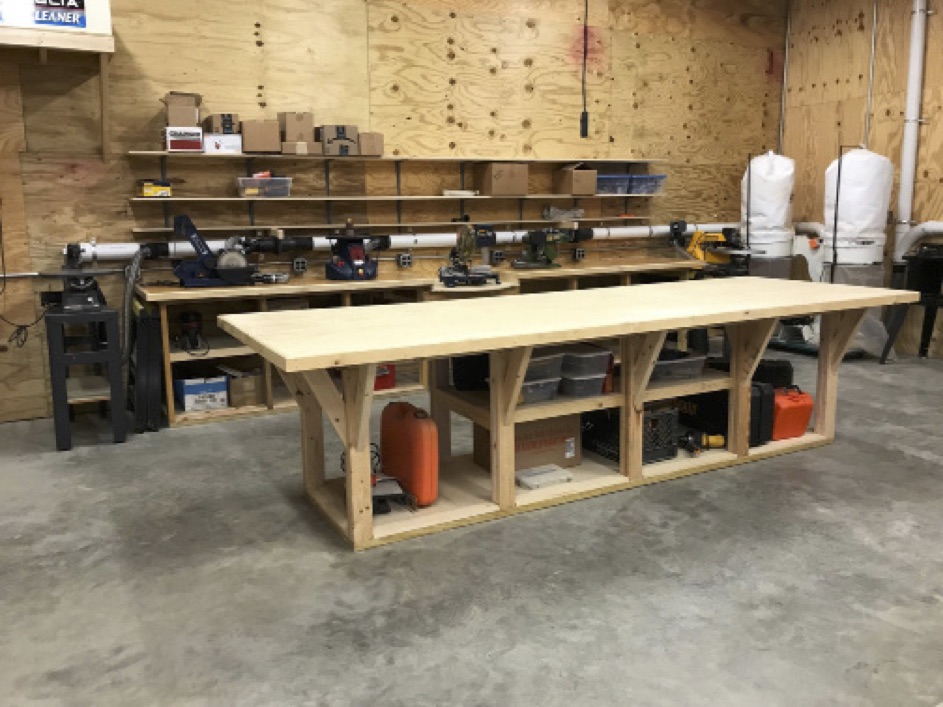 by James Ye
by James Ye
To summarize it, over four thousand miles of pain and intense suffering, danger and fear of the unknown, yet true bonding and experiences for a lifetime. There were brutal rays of summer heat and bone rattling waves of Northern cold. Almost anyone can drive or fly across America, yet it’s when one slows down that the subtle changes in geography and culture are more apparent than ever. Even if you’re sitting on a miserably uncomfortable bike seat, unleashing pools of sweat, aching from every part of your body, the tremendous diverse landscapes that fluctuate across America are easy to soak in and awe at. It was the challenge, the seemingly impossible challenge; the challenge that tested not only strength but mental resilience, the challenge of biking across America, from west coast city of Seattle to east coast National Capital of Washington DC, that changed my perspective permanently.
My name is James Ye; I am the current Senior Patrol Leader for BSA Troop 55 of Great Falls, Virginia, and a member of Sea Scout Ship 1942. I was 15 years old and ranked Life (Boy Scouts) and Apprentice (Sea Scouts) when I began the trip, one of the two youngest to complete the entire ride.
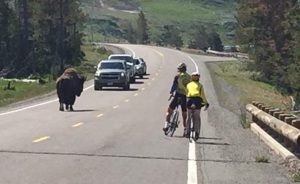 What I was planning to undertake was a 66-day expedition zigzagging across the United States, connecting the west coast to the east through 15 states. The program, Eagle Scouts Cycling Across America (ESCAA) 2018, catered to scouts of high adventure ages and senior ranks capable enough to survive the trip.
What I was planning to undertake was a 66-day expedition zigzagging across the United States, connecting the west coast to the east through 15 states. The program, Eagle Scouts Cycling Across America (ESCAA) 2018, catered to scouts of high adventure ages and senior ranks capable enough to survive the trip.
Accompanying me would be nine other scouts of varying ages, ranks, and riding capabilities, as well as several adults volunteering to help us through support vehicles, bike maintenance, and organizational infrastructure. The only scouts I recognized at the time was my friend William Nowak and my Eagle Scout role model Wesley Pan from BSA Troop 55. The adult leaders were responsible for planning routes, driving support vehicles and mentoring scouts during the trip; it was up to us to utilize scouting skills to cook, clean, set up camp, and occasionally fix our own bikes. Among all the adult volunteers, Troop 55 Scoutmaster Gary Pan was my cycling and scouting mentor, who rode with the us from Seattle to Washington DC.
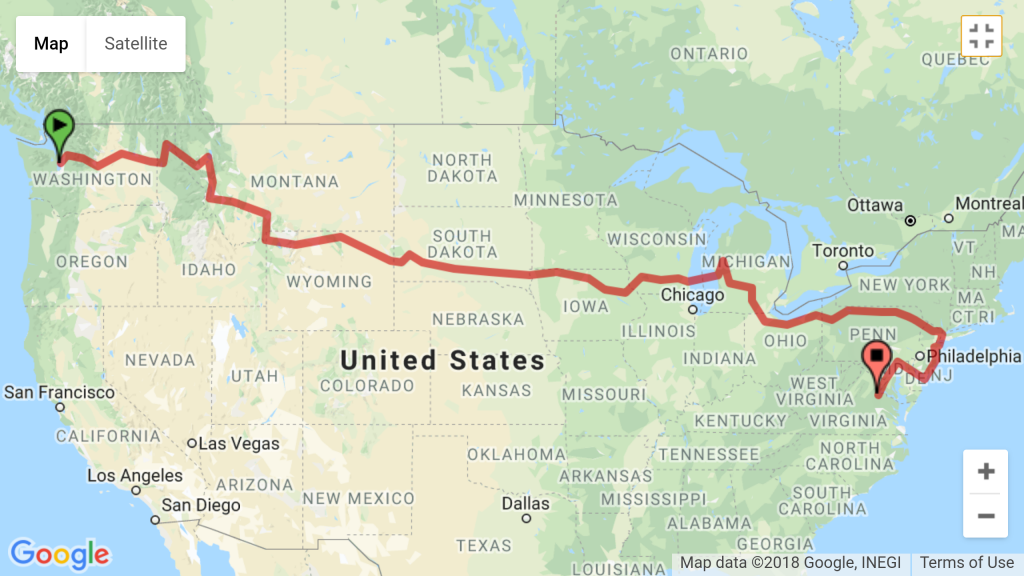
Biking across America is more than just physical capability. The hardest aspect for me would have to be mental resilience – getting into the mindset of having to wake early every morning, getting torched under the sun every day, looking at the calendar and realizing we weren’t even half way done. Even though the average for each day sat at 65 miles a day, there were days where we would do near century rides back to back or climb thousands of feet of elevation day after day in 80-mile rides.
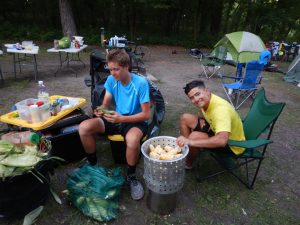 In Washington State, the second day of the trip from Monroe to Leaveworth was a combination of both mentality and physical strength. 90 miles, 5500 feet of elevation, arguably the hardest day on the entire trip. We experienced heat like never before, legs burning, chest beating, stomach aching, and climbed at what seemed like the slowest pace possible up a relentless ten-mile hill. Surrender seemed imminent, and a possible solution to give in was appetizing. However, what kept me going was not only encouragements from the team, but also mental resilience, as well as the mindset that if I could finish this day, the toughest day on the entire trip, I could probably finish all 4000 miles. All of us slowly reached the peak of Stevens Pass, and never in my life had I felt more accomplished, more content with myself, than ever before.
In Washington State, the second day of the trip from Monroe to Leaveworth was a combination of both mentality and physical strength. 90 miles, 5500 feet of elevation, arguably the hardest day on the entire trip. We experienced heat like never before, legs burning, chest beating, stomach aching, and climbed at what seemed like the slowest pace possible up a relentless ten-mile hill. Surrender seemed imminent, and a possible solution to give in was appetizing. However, what kept me going was not only encouragements from the team, but also mental resilience, as well as the mindset that if I could finish this day, the toughest day on the entire trip, I could probably finish all 4000 miles. All of us slowly reached the peak of Stevens Pass, and never in my life had I felt more accomplished, more content with myself, than ever before.
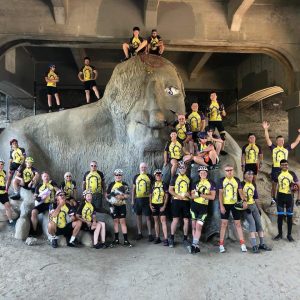 Rain or shine, we were determined to reach our destination by the end of the day. I faintly recall in South Dakota, when flakes of snow began to sprinkle down like flower petals – much to our surprise – as it was the middle of summer. Astonished, we gawked as the cascading snow flakes erupted into a full-blown snow and hail storm; it was just our luck that we were taking a resting day at that time, we were spared of the need to slug through that weather. We were driving back from Mount Rushmore – we took side excursions as to tour famous historical locations – and the car’s passengers were going crazy in amazement at the snow falling in the country that had blazing hot only days before. It’s incredulous to see the changes in geography, climate, and culture that transforms from state to state.
Rain or shine, we were determined to reach our destination by the end of the day. I faintly recall in South Dakota, when flakes of snow began to sprinkle down like flower petals – much to our surprise – as it was the middle of summer. Astonished, we gawked as the cascading snow flakes erupted into a full-blown snow and hail storm; it was just our luck that we were taking a resting day at that time, we were spared of the need to slug through that weather. We were driving back from Mount Rushmore – we took side excursions as to tour famous historical locations – and the car’s passengers were going crazy in amazement at the snow falling in the country that had blazing hot only days before. It’s incredulous to see the changes in geography, climate, and culture that transforms from state to state.
From breath taking mountain views to the endless, lush green fields, I came to the realization that this country’s beauty was characterized by its immense diversity and culmination of many cultures. We had the opportunity to witness buffalo at an eye opening range, the opportunity to visit historical structures, the opportunity to ride across America of our own ability. Our races down steep mountain roads surpassing forty miles an hour left us hollering, adrenaline pumping. Even the dangerous, soaking wet experiences, such as biking through a literal, genuine flood in the rolling hills of Northeast Pennsylvania, only strengthen our friendship ties.
 When everyone first gathered at Seattle, practically no one recognized each other. Ten scouts came from all over the country – Virginia, Pennsylvania, Florida, California. In biking, there is a concept called a paceline, in which cyclist draft off one another by keeping the shortest distance possible between them to reduce wind resistance. Doing so decreases effort levels by twenty percent, yet one sudden change in pace or direction and the whole line could collapse as easily as dominos. The journey was a mix of broken bikes to worn out bodies, scratches to scars, bruises to blisters. Nonetheless, near the end of the trip, we were all able to put trust in one another as comrades, laugh together as friends, and take liberties as if we had known each other all our lives. That’s the kind of bonding that forms out of two months of suffering; if we didn’t support one another, we wouldn’t come out in one piece.
When everyone first gathered at Seattle, practically no one recognized each other. Ten scouts came from all over the country – Virginia, Pennsylvania, Florida, California. In biking, there is a concept called a paceline, in which cyclist draft off one another by keeping the shortest distance possible between them to reduce wind resistance. Doing so decreases effort levels by twenty percent, yet one sudden change in pace or direction and the whole line could collapse as easily as dominos. The journey was a mix of broken bikes to worn out bodies, scratches to scars, bruises to blisters. Nonetheless, near the end of the trip, we were all able to put trust in one another as comrades, laugh together as friends, and take liberties as if we had known each other all our lives. That’s the kind of bonding that forms out of two months of suffering; if we didn’t support one another, we wouldn’t come out in one piece.
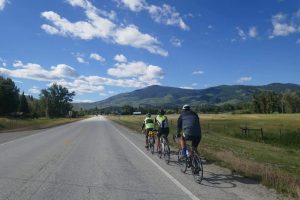 Cycling across America is no easy feat. I only had a year to prepare after being invited by the tour director to participate in this intense challenge. If you can get over the idea that biking across America isn’t impossible, do your best to train your body and mind by being prepared, accept the fact that there will be pain, and chip away at it little by little, to do such an incredible feat is much simpler than you may assume. I recommend any scout adventurous enough to seize this incredible opportunity if it ever pops up again in the future. Not only was it the hardest and best two months I’ve ever experienced, but also it is something I’ll carry with me for the rest of my life.
Cycling across America is no easy feat. I only had a year to prepare after being invited by the tour director to participate in this intense challenge. If you can get over the idea that biking across America isn’t impossible, do your best to train your body and mind by being prepared, accept the fact that there will be pain, and chip away at it little by little, to do such an incredible feat is much simpler than you may assume. I recommend any scout adventurous enough to seize this incredible opportunity if it ever pops up again in the future. Not only was it the hardest and best two months I’ve ever experienced, but also it is something I’ll carry with me for the rest of my life.


 One of the easiest, most effective ways you can support National Capital Area Council is through workplace giving, an employer-sponsored program that empowers you to support your favorite charities through tax-deductible donations deducted directly from your paycheck.
One of the easiest, most effective ways you can support National Capital Area Council is through workplace giving, an employer-sponsored program that empowers you to support your favorite charities through tax-deductible donations deducted directly from your paycheck.  For the first time this year, Goshen had two Family Camps – one during Memorial Day Weekend and one during Labor Day Weekend. The inaugural Memorial Day Family Camp had good turnout for the new event. It was a little stormy, but campers crammed in fun in the sunny mornings at Aquatics and Shooting Sports and then, when the storms came in the afternoon, tried their hand at crafts in Handicraft. The event was popular enough that Goshen is happy to announce it will be offering Memorial Day Family Camp again in 2019!
For the first time this year, Goshen had two Family Camps – one during Memorial Day Weekend and one during Labor Day Weekend. The inaugural Memorial Day Family Camp had good turnout for the new event. It was a little stormy, but campers crammed in fun in the sunny mornings at Aquatics and Shooting Sports and then, when the storms came in the afternoon, tried their hand at crafts in Handicraft. The event was popular enough that Goshen is happy to announce it will be offering Memorial Day Family Camp again in 2019!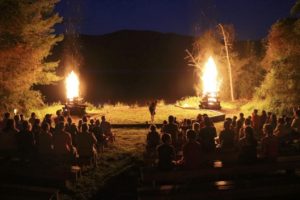 The newest aspect of Family Camp during the Labor Day Weekend was the return of the Saturday evening Square Dance. Way back in the day, the Square Dance was a staple of Family Camp, but it gradually faded away as there was no one who knew how to call. Lucky for Goshen, one of the current summer camp staff members, Lauren Brown, knows how to call from her off-season job at an outdoor school. She led much of the camp in square dancing and line dancing at Forster Hall. Everyone had a fantastic time and we’re looking forward to adding the Square Dance back in as a regular event at Goshen’s Family Camps.
The newest aspect of Family Camp during the Labor Day Weekend was the return of the Saturday evening Square Dance. Way back in the day, the Square Dance was a staple of Family Camp, but it gradually faded away as there was no one who knew how to call. Lucky for Goshen, one of the current summer camp staff members, Lauren Brown, knows how to call from her off-season job at an outdoor school. She led much of the camp in square dancing and line dancing at Forster Hall. Everyone had a fantastic time and we’re looking forward to adding the Square Dance back in as a regular event at Goshen’s Family Camps. Miss out on the fun? Want to come back again? Join us for Family Camping fun in 2019. Goshen Family Camps will be offered Memorial Day Weekend (May 24-27, 2019) and Labor Day Weekend (August 30-September 2, 2019). The cost is $20 per person. Bring your own tent, bring your own food, and Goshen supplies the program. All ages are welcome. Registration is already open! Learn more and sign up at
Miss out on the fun? Want to come back again? Join us for Family Camping fun in 2019. Goshen Family Camps will be offered Memorial Day Weekend (May 24-27, 2019) and Labor Day Weekend (August 30-September 2, 2019). The cost is $20 per person. Bring your own tent, bring your own food, and Goshen supplies the program. All ages are welcome. Registration is already open! Learn more and sign up at 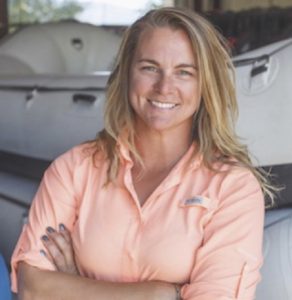 My name is Laura Kuras and I am the NCAC District Executive for our US Virgin Islands and Director of the local Boy Scout Camp here in St. Croix, Camp Howard M. Wall. I am extremely excited to be here in the USVI because it is such a beautiful location filled with amazing people who are ready and willing to bring Scouting back in to the community.
My name is Laura Kuras and I am the NCAC District Executive for our US Virgin Islands and Director of the local Boy Scout Camp here in St. Croix, Camp Howard M. Wall. I am extremely excited to be here in the USVI because it is such a beautiful location filled with amazing people who are ready and willing to bring Scouting back in to the community.
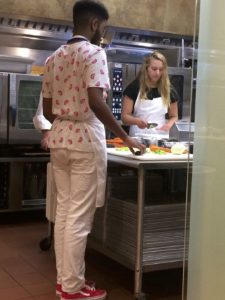 Upcoming topics and activities on the post’s agenda include: the Five Basic Cooking Techniques, Understanding “Sous Vide” Cooking Methods, Sustainable Seafood and Cooking Techniques, Understanding Nutrition and Healthy Easting, Environmental Impact of Cooking, two community service projects (Scouting for Food and cooking at a charity kitchen), visits to a farm or food vender, and a hotel visit. There will be a cook-off at the end of the year with the members cooking their favorite dish and serving it to the other members of the post.
Upcoming topics and activities on the post’s agenda include: the Five Basic Cooking Techniques, Understanding “Sous Vide” Cooking Methods, Sustainable Seafood and Cooking Techniques, Understanding Nutrition and Healthy Easting, Environmental Impact of Cooking, two community service projects (Scouting for Food and cooking at a charity kitchen), visits to a farm or food vender, and a hotel visit. There will be a cook-off at the end of the year with the members cooking their favorite dish and serving it to the other members of the post.
